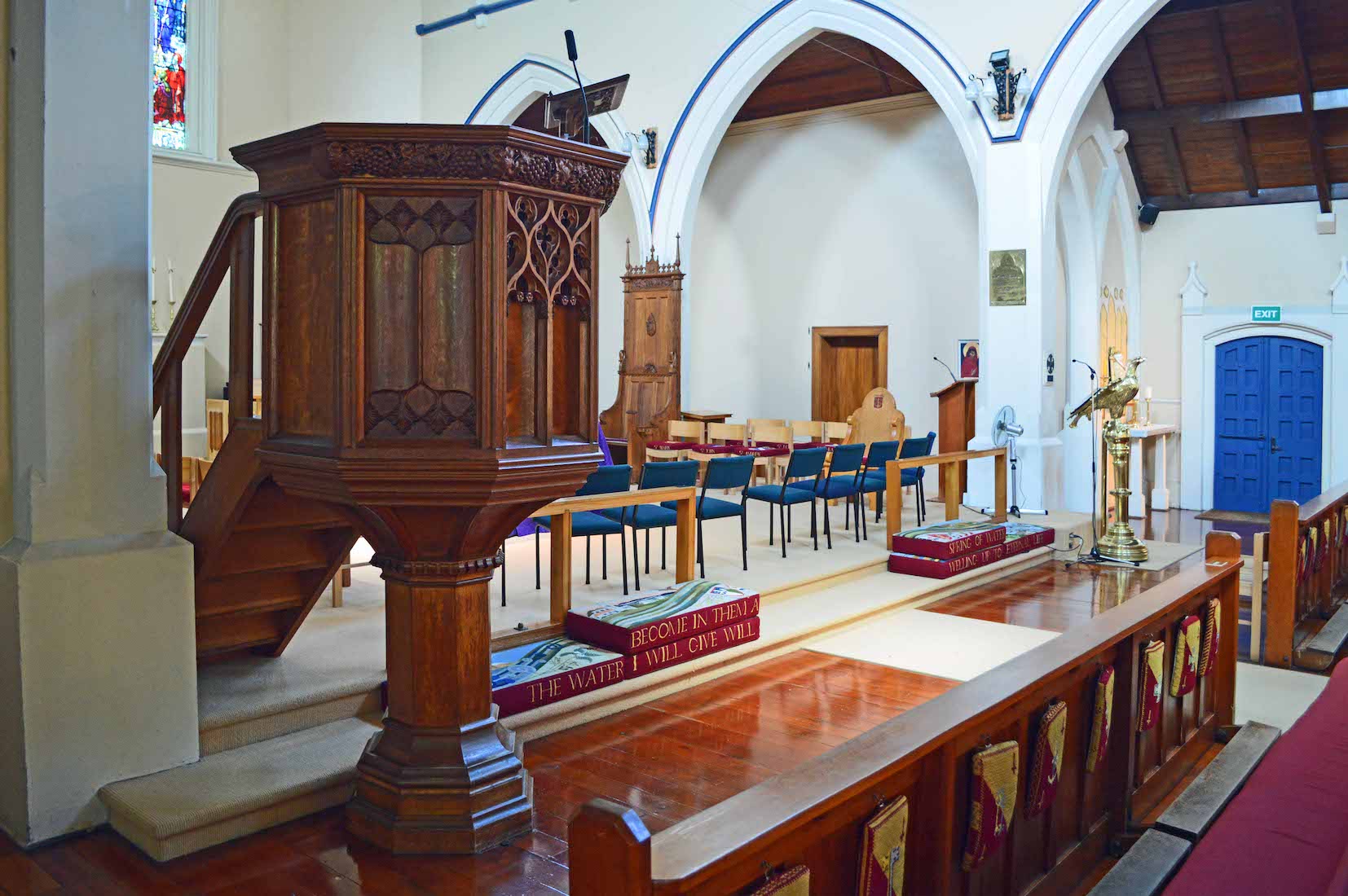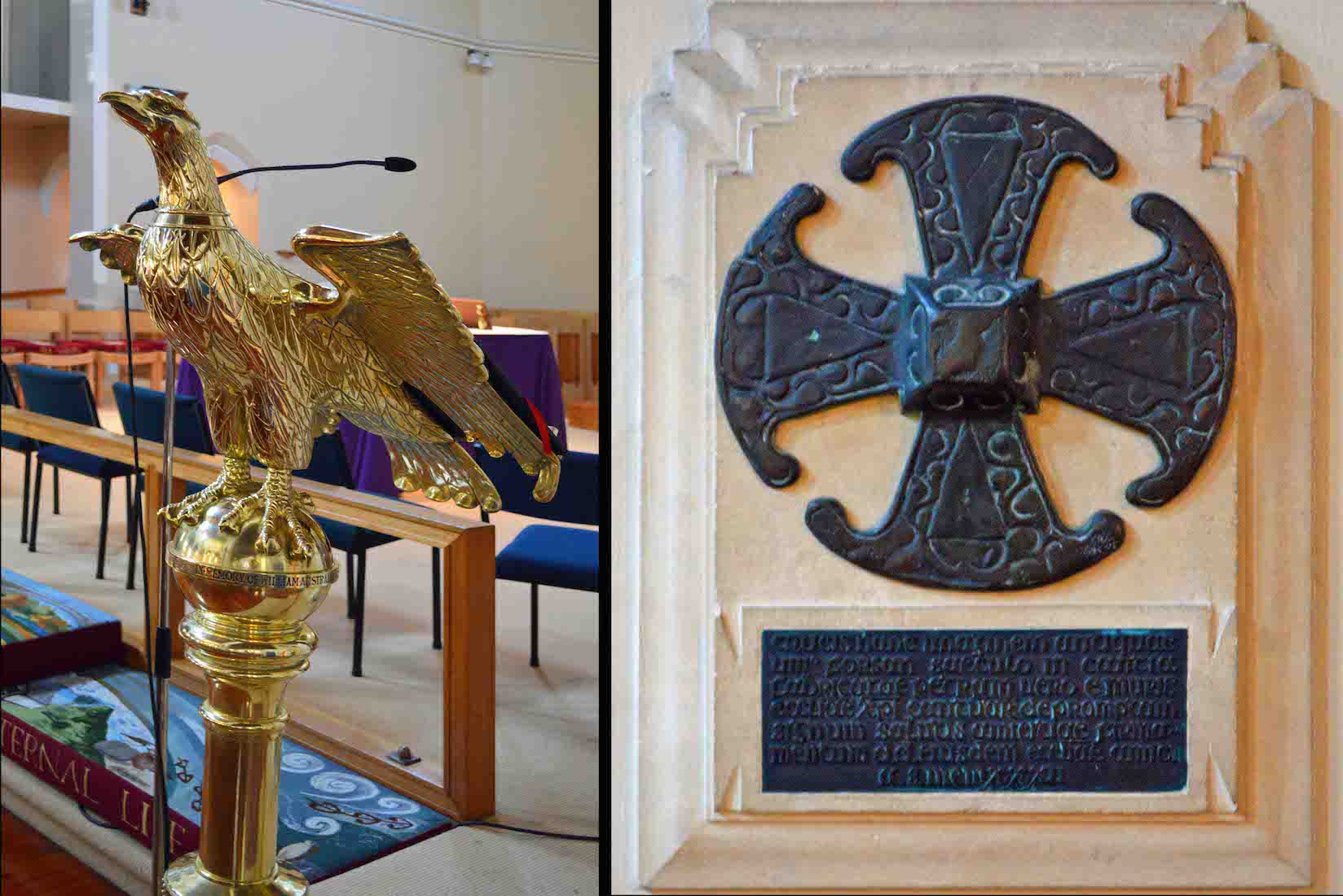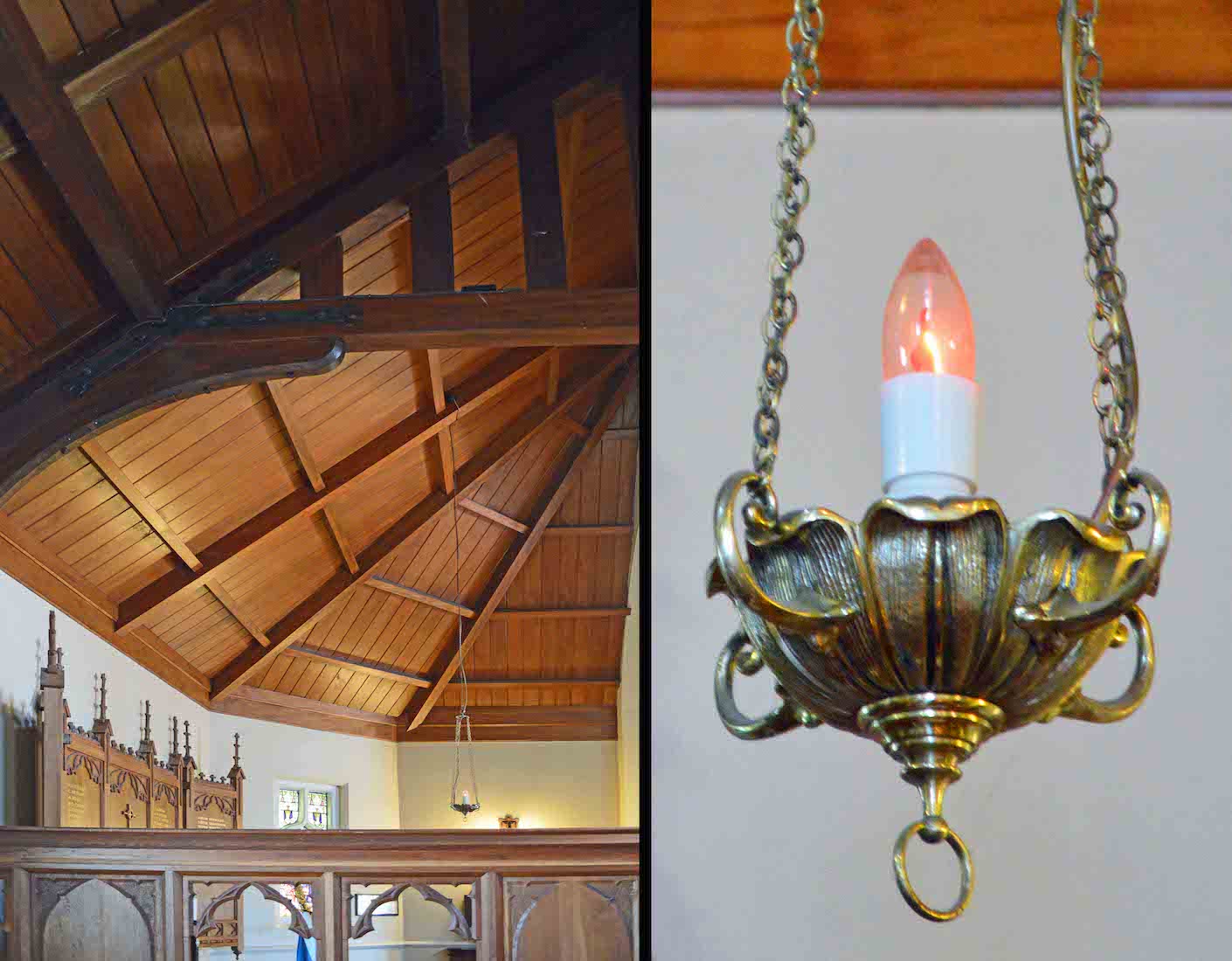
This central window was given in memory of Norman Edward Blomfield. It looks a fairly plain window initially, but closer examination reveals on each panel a small etching of an item important in the life of this man. PLAN
22. PLAQUES

These plaques commemorate the lives of Ethel Maud Dimmock – active member of the Cathedral, and John Willing Warren who was the architect who designed the first stage of St Peter’s. Then Mercia and Vaudine Barnes who made a large contribution to St Peter’s.
23. WOMEN’S WINDOW
These three windows depict from left: Ruth and Naomi (‘Your God will be my God’); Mary Magdalene after the Resurrection of Christ (‘I have seen the Lord’); Mary and Martha (Mary has chosen ‘the better part’).
24. PLAQUES
These plaques are in memory of church member Phylis Valda Mary Hutton 1931 – 1995; Cedric Kenny Onslow Graham who was killed in action in WWI; and parishioner Timothy John Skelton 1967 – 1981 who lived a very short life.
25. WINDOW AND BOARD
The final window on the north wall shows children of all races coming to Jesus. It was financed by Sunday School pennies collected over a long period. Around the corner is a board listing the Vicars of St Peter and the Deans of Waikato.
26. NORTH CHANCEL AISLE
Along the North side of the chancel, and under the organ pipes runs an aisle leading to a large icon of Christ on the Cross. This is a replica of the Taizé Cross. It is based on icons that have been brought from the Orthodox Church and was painted by Br. Eric of the Taizé Community.
27. ACROSS THE NAVE
Before we explore the chancel and sanctuary areas we shall explore the South side of the nave. Along the way we shall find the pulpit, the kneelers, and the lectern.
28. PULPIT
The wooden pulpit is attractively carved. It was given in 1917 by the St Peter’s Ladies’ Guild. It is from here that God’s Word is expounded on Sundays.
29. KNEELERS
The kneelers are lined up in front of the altar rail. They form a message – the words of Jesus: ’The water I will give will become in them a spring of water welling up to eternal life’. (John 4:14)
30. LECTERN AND CROSS
The brass eagle lectern is a common sight in cathedrals, as is the Canterbury Cross. The original cross dates from 850 AD. Replicas were given to all Anglican cathedrals in 1935 as a recognition of friendship with Canterbury Cathedral.
31. PLAQUE AND SOUTH AISLE
The plaque just behind the lectern remembers Vicar Robert O’Callaghan Biggs who served the parish from 1882 to 1899. In the aisle we see a distant painting, and closer, an icon.
32. PAINTING AND ICON
The icon of Miryam of Magdala (a.k.a. Mary Magdalene) she is holding an egg. The egg is also a symbol of birth, of nous or gnosis – knowledge, and a symbol for the resurrection. The faded print in the distance is harder to identify: perhaps the key suggests St Peter?
33. NAVE SOUTH AISLE
The wall of the nave South aisle, like the North aisle, alternates between windows and plaques.
34. NAVE SOUTH WINDOWS
The three windows at right depict Mary and Joseph (with identifying lily), the nativity, and the presentation of Jesus to Simeon in the Temple. The window at left with St Aidan is interesting. It is in memory of Hori Raiti, Archdeacon of Te Tai Hauauru. The saint is surrounded by Māori designs. The text above says: ‘Go ye into all the world and preach the gospel.’
35. PLAQUES
Frederic Harris of Huntly and Harry Keith Sace are remembered on these plaques. Harris held various significant positions in the Cathedral, and Sace died in battle during WWI.
36. CRESTS
Next along this wall is this attractive row of crests. At left is the Diocesan crest for the Waikato with motto Truth, Simplicity, Faithfulness. At centre is the crest for St Mary’s Diocesan School. And at right (for some reason!) is the crest for St Thomas’s Cathedral, Kuching.
37. TWO MORE PLAQUES
These plaques remember Joseph Fleming Keith Hunter and C. J. Pierce who both died in battle, Hunter in WWI and Pierce in WWII.
38. WEST WALL
This brings us to the West wall of the Cathedral. From here we can see the font at centre, four stained glass windows, and an interesting looking structure at left.
40. CHAPEL ROOF
This Chapel has an interesting roof line, making an attractive variation on the nave gable. A sanctuary lamp hangs above.

















